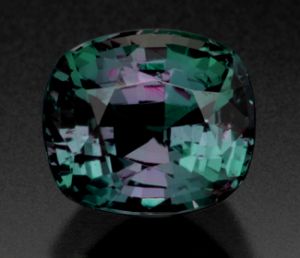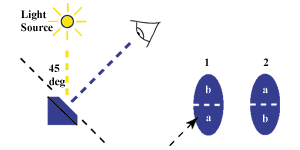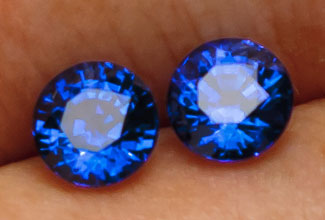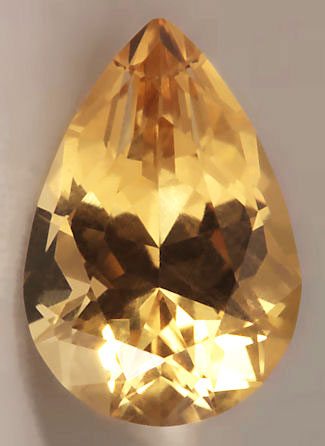
10986: 2.11 Carat pear shaped brilliant cut with exceptional vivid color and crystal.
by Richard W. Wise, G.G.
© 2012 All rights reserved.
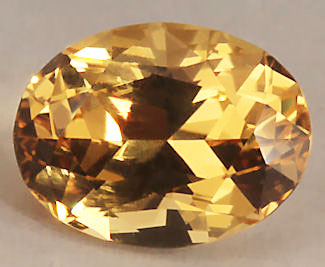
10987 A 1.74 Carat oval brilliant heliodore from the Roebling/Merryall Mine, Litchfield, Ct. The gem exhibits an exceptional vivid medium toned golden hue.
Golden Beryl; An American Gem
In the 19th Century, the state of Connecticut was known as a major source of golden Beryl.
In the past few years a fair amount of golden beryl a.k.a. heliodor has entered the gem market. Material currently in the market is coming from Pakistan, Brazil and Ukraine and although there is no reliable gemological test that will prove irradiation, much of this material is thought to be enhanced by gamma radiation, a method that leaves behind no footprints. Of late there have been misguided attempts to cash in on the gem's more famous sibling by re-labeling the gem as "yellow emerald."
The continental United States is not known for its gem wealth though historically both California and especially the New England states have produced some exceptional gems. In the 19th Century, Maine was known as a repository of gem quality tourmaline, some beryl and amethyst. Most of the gems found in New England are of pegmatic origin the result of long super-hot magmatic fingers working their way up through cracks into the country rock causing localized melting into a chemical stew and its constituents, where beryllium oxide was present, might reform into beryl crystals. Many of the most important strikes were found in Maine including the famous Mt. Mica Mine which resumed operations in 1990 after a long hiatus. Pegmatites are found in all the New England states excluding Rhode Island and are particularly numerous in Maine and New Hampshire. Gem mining was in most cases simply a byproduct. The mines were mainly exploiting mica, Beryllium and feldspar.
Beryl is a family name whose best known offspring are emerald and aquamarine. If a beryl is pink it is known as morganite if red it is called bixbite or simply red beryl. In the 19th Century, golden beryl was quite rare and Connecticut was considered a major source. The term heliodore, from the Greek meaning "gift of the sun" was originally a trade name made up to describe yellow beryl from Southwest Africa.
"A Gift from the Sun," Gem Mining in Connecticut:
Few realize that the George Roebling or Merryall Mine located in Litchfield County, Connecticut was, historically, one of the most productive and commercially important gem mines in the United States. This mine opened in 1880 as a feldspar and mica mine and worked intermittently until 1955 when it was closed. According to the late John Sinkankas, Merryall is known to have produced particularly fine beryl in shades of blue, yellow and green including a 40.44 blue-green heart shaped gem that now resides in the Smithsonian. The mine produced some sizable aquamarine, but most of the heliodore production was limited to very small faceted gemstones.
We recently acquired a few particularly fine rough examples of natural unenhanced heliodore, portions of a single large crystal, sourced at the Roebling/Merryall Mine site from a pile of unsorted mine run material in the early 1980s. The crystal was inside a large boulder. This material has been precision cut into a few lovely heliodore gems. These gems are flawless to the eye, exhibit a particularly fine crystal structure, a high degree of transparency and a vivid pure yellow hue and perfectly cut by our lapidary.
10987 Rough material from which the 1.74 carat oval featured at the beginning of this post, 10987, was cut.
As Sinkankas points out, very little of the material sourced from this location is of gem quality never mind eye-flawless material. Mine run material containing 1% Beryllium is considered a rich deposit. Gems from this site have not been on the market in many years. For the gem collector, this is an or for the jewelry lover looking for a lovely vivid yellow gemstone, this is an opportunity to buy American and acquire a particularly fine gem from a truly rare source.

